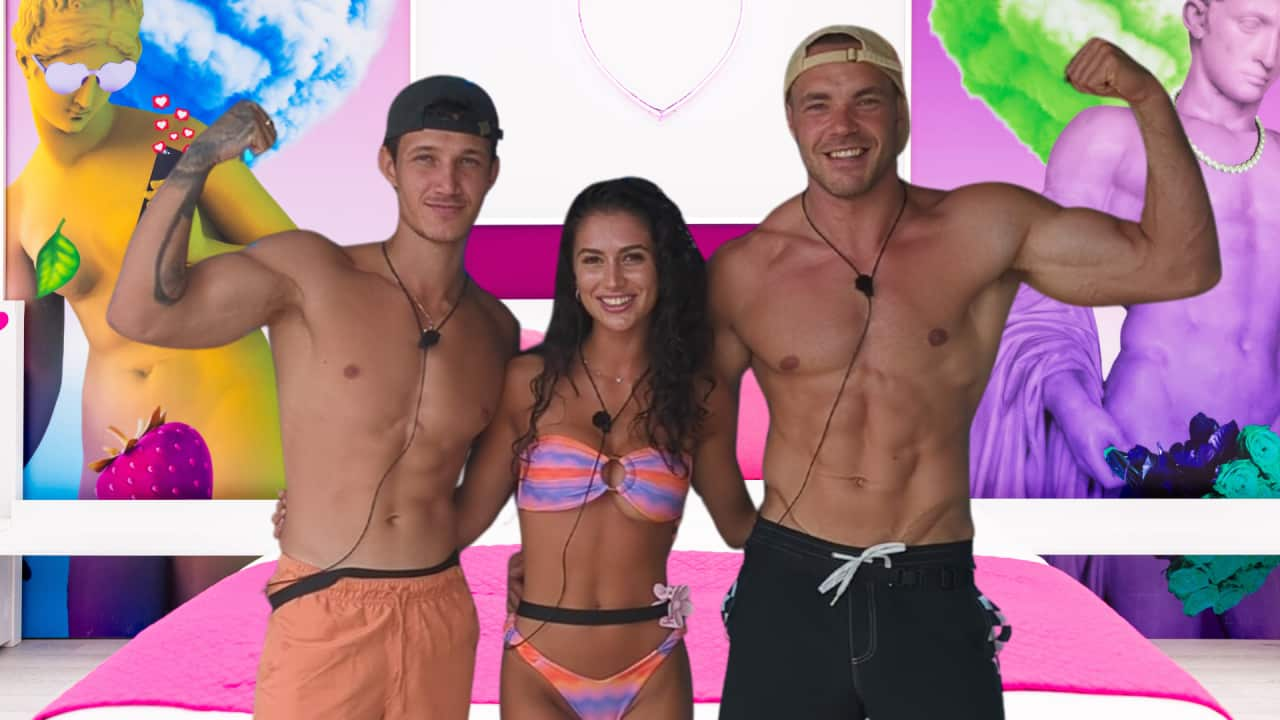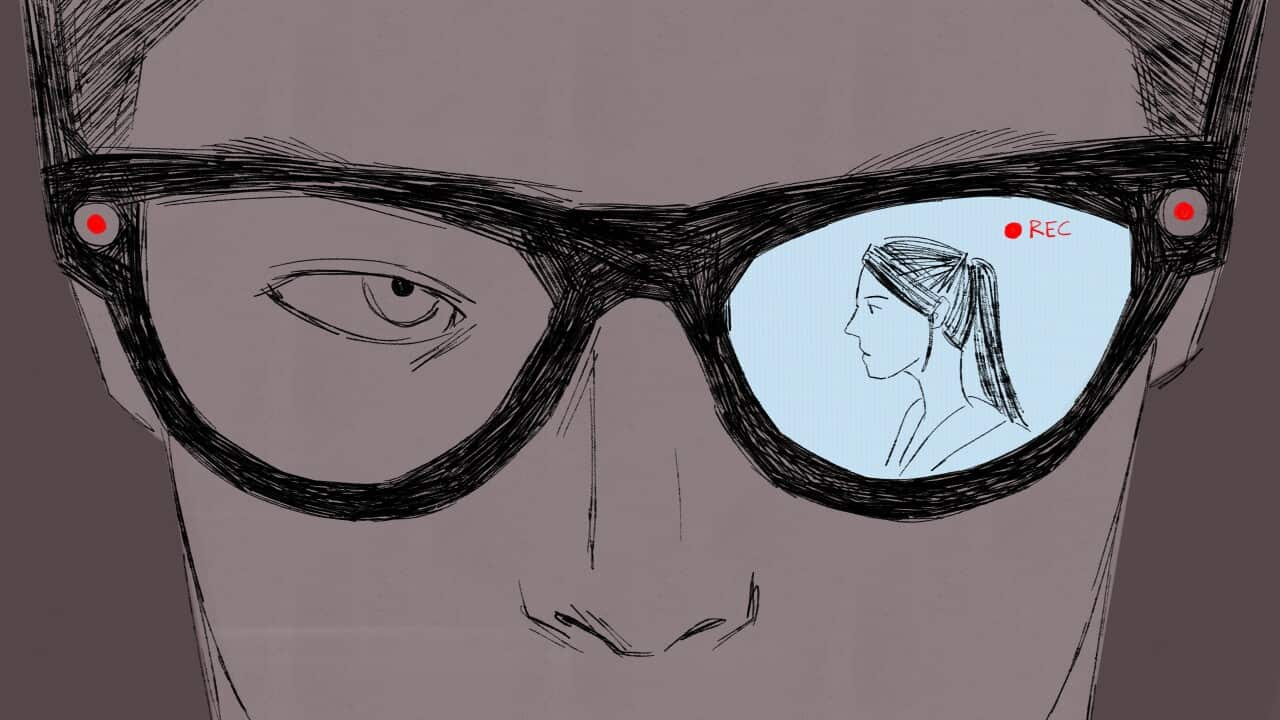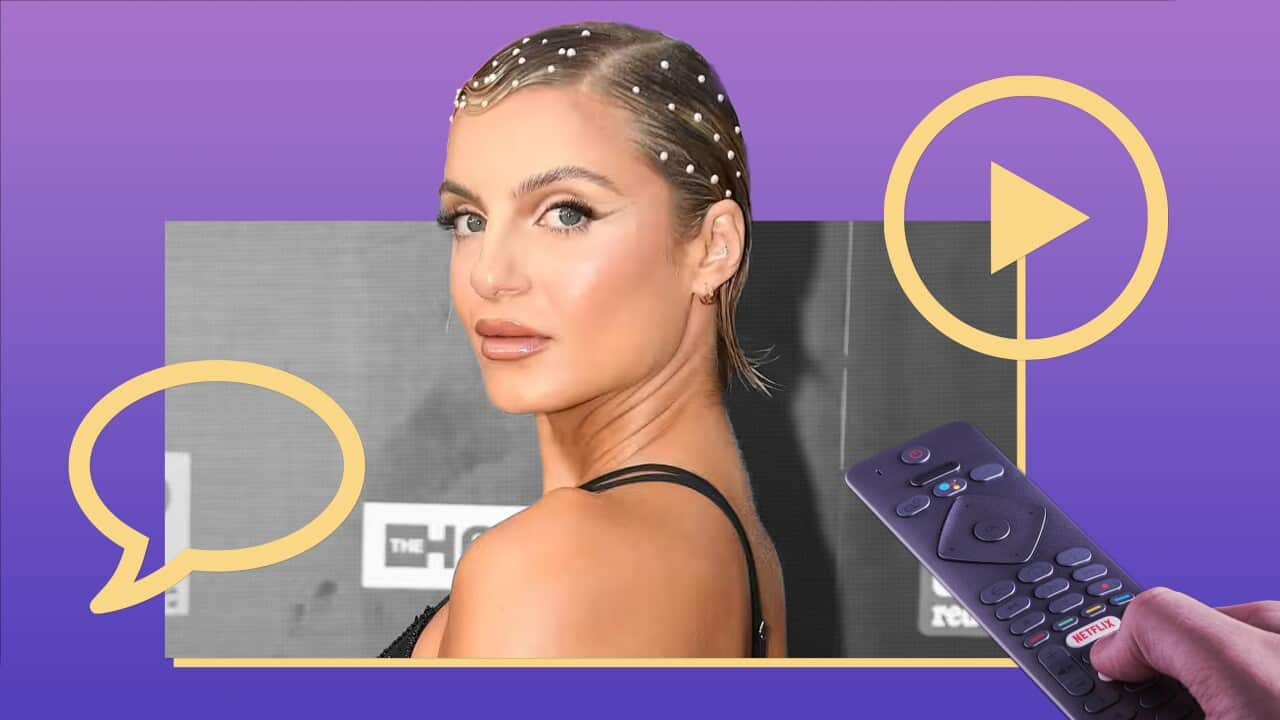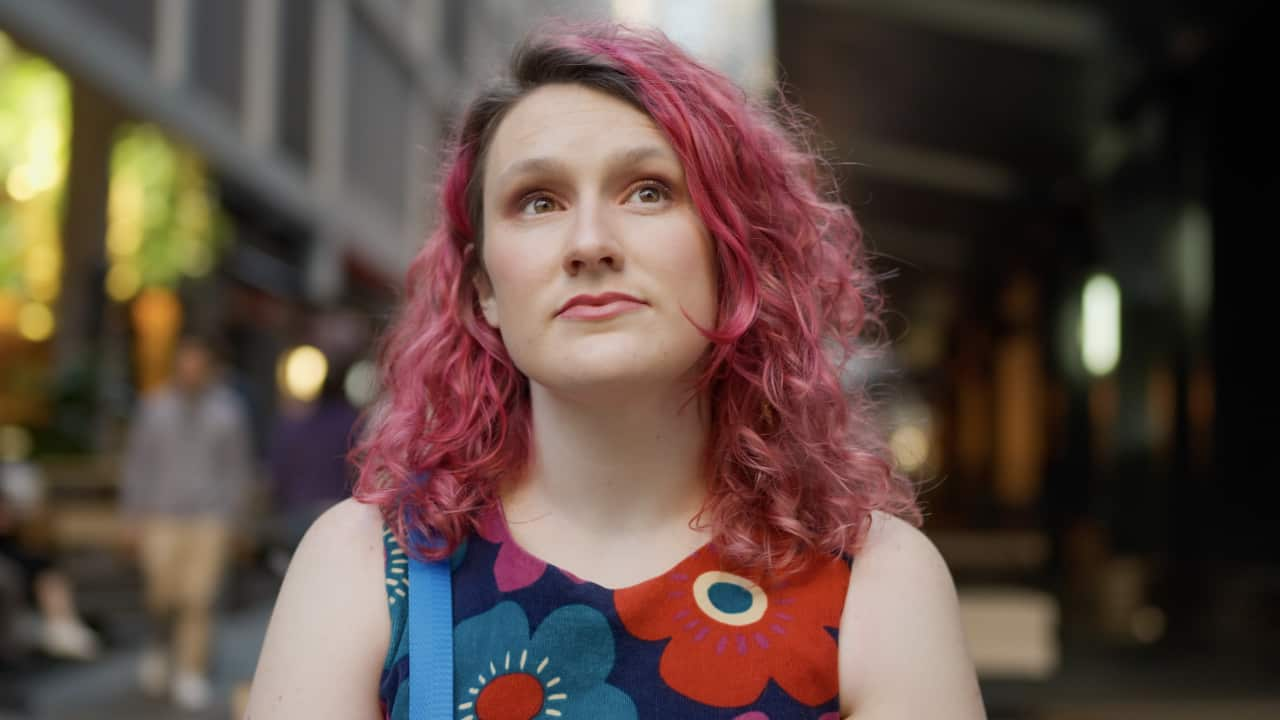Before getting intimate in the villa, former Love Island Australia contestant Georgia Murray had to press a button next to her bed to "consent".
Her partner (who she met on the show) had a button of his own, as did everyone in the villa where a group of single men and women are put on an island with the aim of finding love and winning a $50,000 cash prize.
And when Georgia forgot to press the button: "Producers would actually come into the room and stop whatever's happening or they actually go over speakers and say, 'you either need to stop or you need to press your consent button.'"
The button is connected to an infra-red heart above the bed and when both are willing participants, producers and viewers can see it light up.

Next to the beds on Love Island Australia, there are small "consent" buttons hidden in pink love hearts. Source: Supplied
"Someone literally came in with a flashlight shined on us, and were like, 'Georgia and Nate, press your consent button or stop what you're doing."
Murray said while the moments were awkward it was comforting to know they were actively being checked on.
"It was nice knowing you kind of had that 'big brother' looking out for you because if you weren't going to press it, there was consequence."
The show's creators, who introduced the button in 2022, say it's the first time it has been used in the genre.
But the discussion around the usefulness of the button kicked off internationally this month when Murray posted a TikTok drawing attention to the button.
“Basically, you press them before you go to bed to consent to anything that happens during the night," the 23-year-old told viewers on TikTok.
“Now as viewers, we can see who has pressed it because we can look at the little love heart on top of the bed and if it’s glowing – then they’ve consented..."
“You can actually see who has consented and wants to get naughty each episode.”
Why the Love Island consent buttons were created
Alex Mavroidakis is the creative director of ITV Studios Australia, the network that created Love Island.
He told The Feed the buttons were introduced in a bid to be more proactive about consent.
He said Love Island's creators, recognising it is one of the only reality shows to have contestants share beds, wanted to add an extra layer of safety.
"In other shows, they generally have bunk beds," said Mavroidakis, whose work on Big Brother, I'm a Celebrity Get Me Out Of Here and Love Island Australia spans more than a decade.
"But what it does mean is that we don't need to watch them like hawks," he said.
“They have to both push their button to light the heart, which basically is telling us that we consent to what is happening under the covers here, and then at that stage, we leave them alone — we're not making porn."
"It was actually mortifyingly embarrassing that every time they got hot and heavy under the covers, they had to hold their microphones close to them and whisper the words, 'I consent' into them," he said.
When only half the heart above the bed is lit up, this is when producers pay more attention to interactions, but say the buttons have "changed the game" and given the contestants another mode of communication about their intentions.
An oversimplification of consent?
The Australian not-for-profit organisation, Teach Us Consent, posted in a comment on Instagram that while the buttons were a step in the right direction, it hoped they would be paired with ongoing conversations about how consent is fluid.
"Ideally consent, boundaries and desires are openly and candidly communicated between people instead of having to be signified through pressing a button," the post said.
"Consent has to be ongoing, and while this does support the initial “yes” or “no”, people can change their mind at any point, and that needs to be respected — despite if there was a glowing heart at the beginning of the night!"
Michael Flood, a Queensland University of Technology researcher who studies violence and gender, called the button a "gimmick".
"If someone has the consent button on, does that mean they consent to any sexual act? Does it mean yes, they're up for anal sex, they're up for strangulation?"
In Australian jurisdictions that apply affirmative consent, he says there is a requirement to proactively agree to or seek another person’s agreement to that activity. This, he says, is not gained by adding a button to the equation.
"You need to get sexual consent at the beginning of each sexual act," he said.
"I don't think the situation on Love Island is worse than the situation in the world, but it's certainly not a proper standard of affirmative consent."
The button isn't a green light for everything, contestants are told they can take back consent and they are still wearing a microphone where they can talk to producers the entire night, he said.
Reality shows have a history of sexual misconduct allegations
Reality TV shows such as Below Deck Down Under, The Real Housewives Ultimate Girls Trip, and Bachelor in Paradise are among shows where allegations of sexual misconduct have been reported.
Viewers saw show producers intervene in two separate incidents during the filming of the Australian reality show Below Deck Down Under in 2023 when cast members were seen making unwanted sexual advances.
Flood said the set-up of reality TV shows can also intensify the prospect of being coerced into sexual activity.
"Women feel under pressure to consent to men's sexual advances, and it can be hard to resist that, particularly the fact that it's a TV show might actually intensify that sense of obligation, the sense you need to perform for the camera or create some juicy gossip or whatever," he said.
"Equally, when a guy isn't interested in sex, he's up against the kind of social norm that men should always be ready for sex."
Murray says it's better to have the buttons than not, but recognises their shortcomings.
"To a point, you don't actually really know what you're consenting to."
If you or someone you know is impacted by sexual assault, call 1800RESPECT on 1800 737 732, text 0458 737 732, or visit . In an emergency, call 000.













